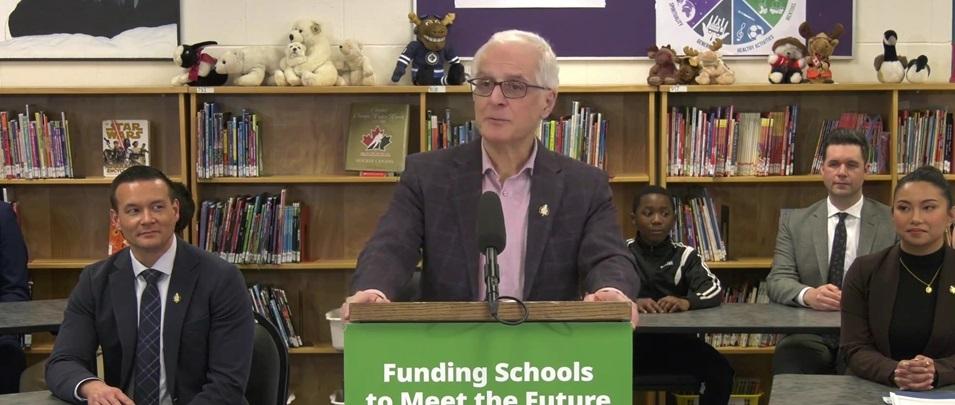Many Manitoba school divisions will be breathing a sigh of sweet relief after an announcement from the province on February 1 promising more operating funding to come.
Though the current school year is already at its halfway point, new funding will still be dispensed this year at a rate of 3.4 percent, an amount the province says is more than the current inflation rate.
This 3.4 percent increase is there to aid school divisions who have seen high midyear enrolment growth rates and those that have smaller taxbases than other divisions.
“Today, as the minister, I’m proud to say that our government is funding schools at the level they need,” said Nello Altomare, Minister of Education and Early Childhood Learning, in a press release. “We’re going to deliver stable, predictable funding that meets their operational needs so kids succeed and teachers and all other support staff are supported in the important work that they do.”
Altomare says that his department has established two primary goals for the coming years.
Firstly, they plan to develop a directive that will see a 20 to 1 student-to-teacher ratio throughout Kindergarten to Grade Three classrooms.
As well, accessible in-school nutrition programming will soon be available in schools across the province.
In the works for the 2024–25 budget is a plan to increase school division funding by more than $104 million. Of that total, $51.5 million is designated for public school operating costs. This includes $6.2 million to be used to aid schools who are experiencing midyear enrolment growth. Another $3 million will be invested in additional teacher salaries in order to accommodate the smaller class sizes.
“This funding will facilitate greater one-on-one support for our youngest learners, so that they can acquire the foundational skills and knowledge necessary to succeed as they proceed through the school system,” Altomare said.
In-school nutritional programming for the next school year will require $27.5 million. Capital support related to the building of new schools is set at $11.3 million.
Finally, independent schools will be eligible for $10.9 million of that funding.
In an effort to distribute these funds in an equitable manner, Altomare says that his department will be looking at the enrolment rates and socioeconomic needs within each division.
“We want to do a better job of ensuring every kid gets the same experience at school regardless of where they live in Manitoba,” Altomare said.
In the 2024–25 school year, the Hanover School Division will see a 7.1 percent increase in funding. Seine River School Division comes in at just under 6 percent. Division Scolaire Franco-Manitobaine can expect an increase of nearly 11 percent.
But there’s more for school divisions to get excited about beyond the increase in government funding. The NDP government is agreeing to provide more flexibility to school divisions when it comes to their property tax mill rates.
In recent years, under the PC government, a freeze on school tax mill rates put divisions in a position where shortfalls in their budgets could no longer be compensated for by increasing the property taxes of their ratepayers.
“School divisions now will be able to go to their local ratepayers and talk to them about their local levy,” Altomare said. “We trust school divisions to make the choices that will impact positively on their community. They are certainly in touch with their community members, and we trust them to do the right thing.”


